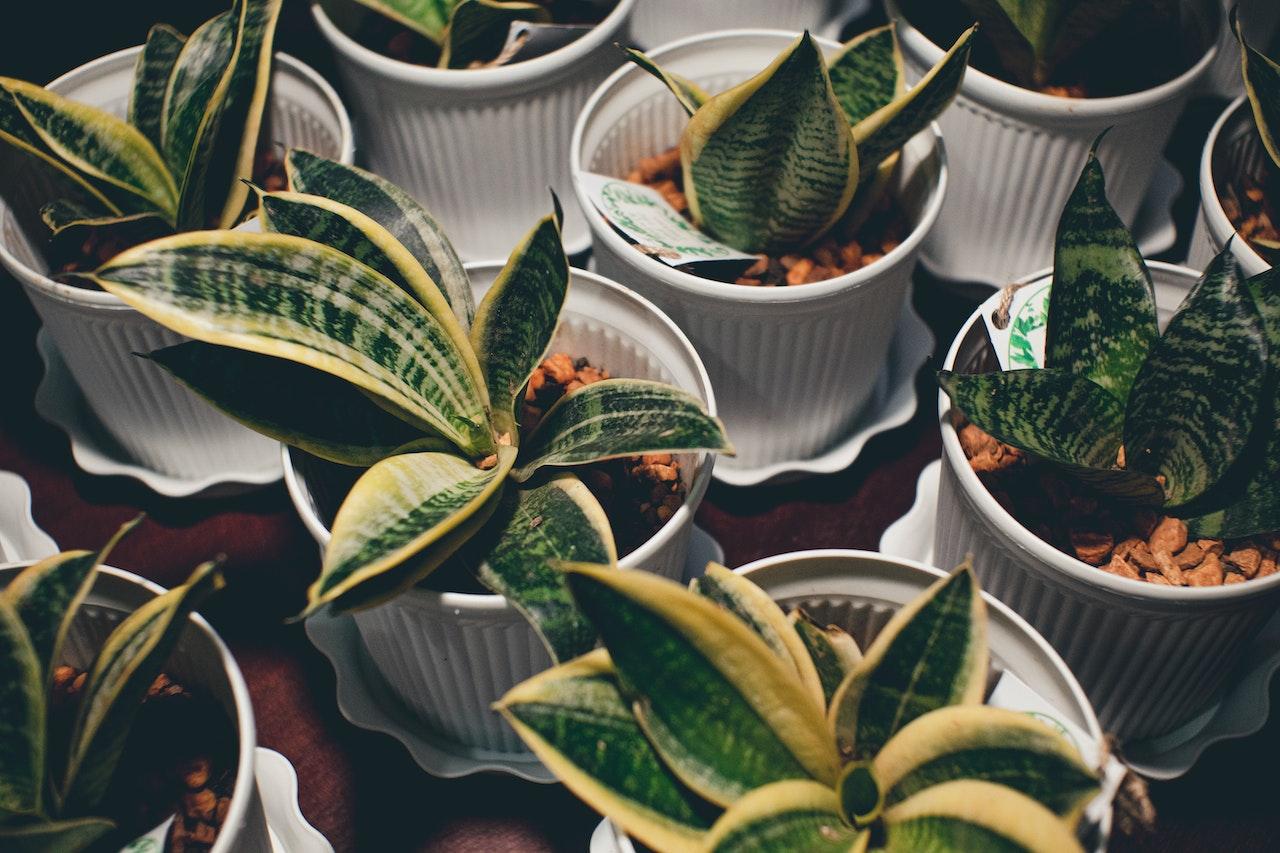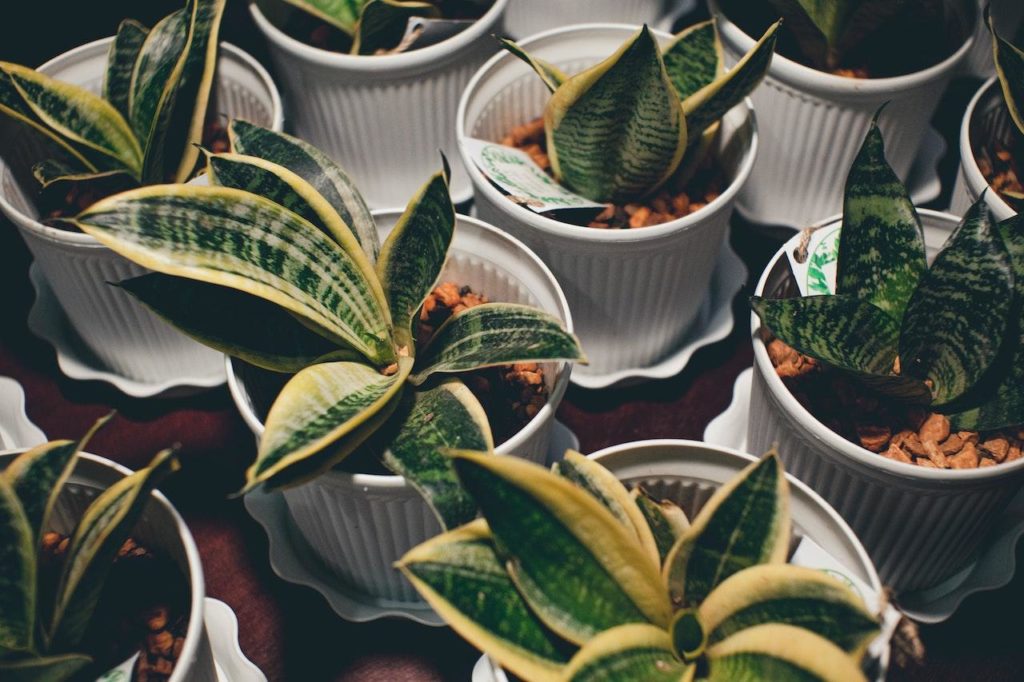When it comes to houseplants, snake plants are some of the most popular options. They’re easy to care for, they’re attractive, and they can help purify the air in your home. But like all plants, snake plants need to be repotted occasionally.

Credit: Pexels
If you’re looking for a comprehensive guide on how to repot a snake plant, look no further! In this post, we’ll cover everything you need to know in order to successfully repot your snake plant, including what type of pot to use, how to prepare the potting mix, and more.
What Is A Snake Plant?
A snake plant, also called a mother-in-law’s tongue, is a type of succulent plant that is native to Africa. Snake plants are easy to care for and make a great addition to any indoor space. Snake plants have long, narrow leaves that are often variegated with green and white stripes.

These plants can grow to be quite tall, so be sure to choose a pot that is large enough to accommodate your plant. Snake plants are tolerant of low light conditions and can even thrive in rooms with no natural light.
Why Repot Snake Plants?
Snake plants typically need to be repotted every two to three years. As they grow, their roots expand and fill up the pot. When this happens, the plant can become pot-bound, which can stunt its growth.
In addition, repotting gives you a chance to inspect the roots and get rid of any that are damaged or diseased. It also allows you to add fresh potting mix, which can help your plant stay healthy.
When to Repot Snake Plants
The best time to repot snake plants is in the spring, before the plant’s growing season begins. If you can’t repot at that time, you can do it in the fall. Just be sure to give the plant a few weeks to adjust to its new pot before the winter arrives.
It is generally recommended to repot snake plants every two to three years. However, this may vary depending on the size of the plant and the pot. If the plant is pot-bound (the roots are growing out of the drainage holes), it will need to be repotted more frequently.
What Type Of Pot Should You Use For A Snake Plant?
When it comes to choosing a pot for your snake plant, there are a few things to keep in mind. The size of the pot should be proportional to the size of the plant, and the pot should have drainage holes to allow excess water to escape. A glazed ceramic pot or a plastic pot with a drainage tray are both good choices.
What Type Of Soil Should You Use For A Snake Plant?
There are a few things to keep in mind when choosing soil for a snake plant.
- The soil should be well-draining. Snake plants are native to tropical regions and do not like to sit in wet soil.
- The soil should be loose. This will help the roots of the plant to spread out and grow properly.
- The soil should be slightly acidic. This can be achieved by adding some peat moss to the soil mix.
- One final thing to keep in mind is that snake plants are not heavy feeders. This means that you should not use a soil mix that is high in nutrients. A simple potting mix made up of equal parts peat moss, perlite, and vermiculite will work well for a snake plant.
How To Repot A Snake Plant?
If your snake plant is looking a bit pot-bound or like it needs a bit of a refresh, it might be time to repot it! Repotting is a really easy process and doesn’t take too long. Plus, it’s a great opportunity to give your plant a little bit of TLC.
What you’ll need
- A new pot that is 1-2 inches larger in diameter than the current pot
- Fresh potting mix
- A sharp knife or gardening shears
- A spoon or trowel
- Optional: a saucer or tray to catch any water that might drip
Directions.
- Soak your new pot in water for about 15 minutes. This will help to prevent the pot from soaking up too much water from the potting mix, which could make the mix too dry.
- While the pot is soaking, prepare your potting mix. If you’re using a commercial potting mix, make sure to follow the directions on the package. If you’re making your own mix, you’ll need:
- 1 part perlite
- 1 part peat moss
- 1 part vermiculite
- Once the pot is finished soaking, drain it and add fresh potting mix to the bottom, filling it about halfway.
- Next, gently remove your snake plant from its current pot. You may need to use a sharp knife or gardening shears to cut through the roots if they’re really tightly bound.
- Once the plant is out of the pot, shake off any excess dirt and inspect the roots. If they’re really long or look damaged, you can trim them back a bit with your knife or shears.
- Now, it’s time to put your snake plant in its new pot! Add more potting mix to the pot, gently tamping it down as you go. Once the plant is in and the pot is full, give it a good watering.
- If you’re using a saucer or tray, make sure to empty it after 30 minutes or so. You don’t want your plant sitting in water, as this can cause root rot.
How To Care For A Snake Plant After Repotting?
Once you have successfully repotted your snake plant, it is important to take care of it properly to ensure that it thrives. Here are some tips on how to care for your snake plant after repotting:
- Water your snake plant regularly, but allow the soil to dry out in between waterings.
- Place your snake plant in a bright location, but in indirect sunlight.
- Fertilize your snake plant every few months with a balanced fertilizer.
- Inspect your snake plant regularly for pests and diseases and take action accordingly.
By following these simple tips, you can ensure that your snake plant will thrive in its new pot!
Frequently Asked Questions
Why should I repot my snake plant?
There are a few reasons you might want to repot your snake plant. Maybe the plant is getting too big for its pot, or the roots are starting to come out of the drainage holes. Or, you might simply want to refresh the potting mix. Whatever the reason, repotting is a pretty easy process.
When should I repot my snake plant?
The best time to repot your snake plant is in the spring, before the plant starts putting out new growth.
How often should I repot my snake plant?
Generally, you should only need to repot your snake plant every two or three years.
Can I repot my snake plant while it’s blooming?
Yes, you can repot your snake plant while it’s blooming. In fact, it’s actually a good idea to repot after the plant has finished blooming, so you can give it a fresh start for the next blooming cycle.
What kind of pot should I use for my snake plant?
Any type of pot will do, as long as it has drainage holes. Terracotta pots are a good option because they allow the roots to breathe.
What kind of potting mix should I use for my snake plant?
A well-drained potting mix is best for snake plants. You can use a commercial potting mix, or you can make your own by mixing equal parts sand, peat moss, and perlite.
Do I need to fertilize my snake plant after I repot it?
No, you don’t need to fertilize your snake plant after you repot it. In fact, it’s actually better to wait a month or two before fertilizing, to give the plant time to adjust to its new pot and potting mix.
Conclusion
Reporting is necessary for your plant’s health. The steps for repotting your snake plant are quite easy. Moreover, the process will prevent pest infestation and help your plant to thrive. So, we’ve compiled this guide for repotting your snake plant. It also includes the benefits of repotting, the best time to repot and the step-by-step process to repot.
